Public Art on Greenwich Peninsula: Cultivating a Community
Festivals go so far, but art breaks boundaries
This post may contain affiliate links. Learn more
Greenwich Peninsula is rapidly rising out of its watery beginnings within a big bend in the Thames to be one of London’s most welcoming and impressive cultural centres. This summer it will become home to the capital’s largest free-to-view collection of permanent public art. We spoke to the curators of this ambitious enterprise.
Boldly modern and fiercely diverse, every art commission and architectural plan on the Peninsula has its community in mind. Even when construction takes over an area for a short time, creativity is seeded in the furrows: A series of cranes designed by Morag Myerscough are a reminder that change is less sunshine and rainbows and more scaffolding and noise disturbance.
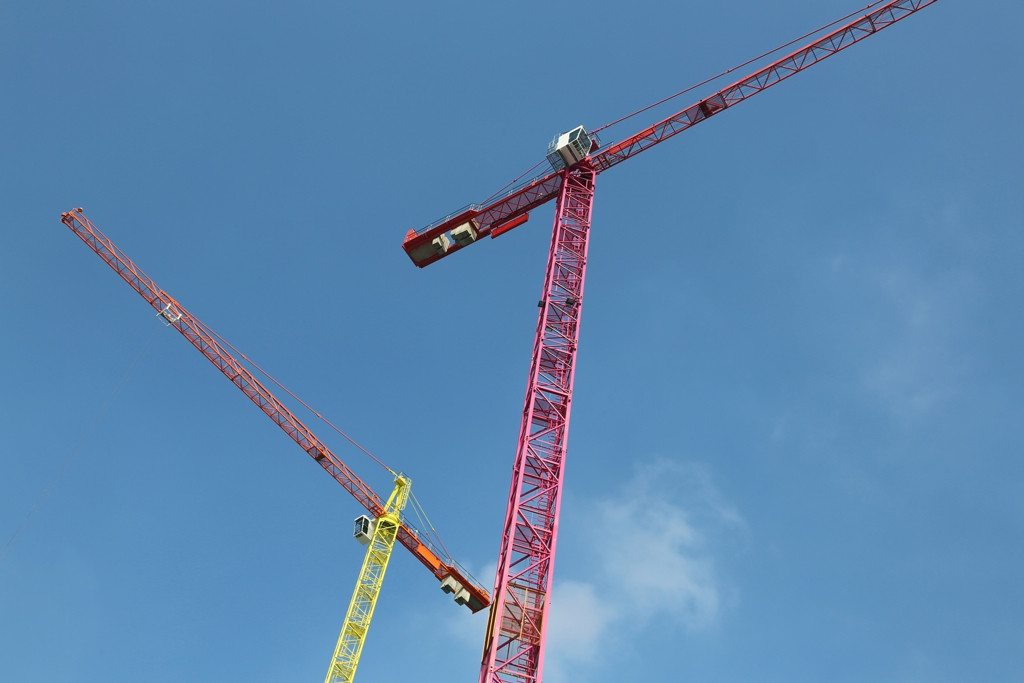
Colourblock Cranes by Morag Myerscough ©Nina Mandanhar
Embracing chaos and making the process into an artwork in its own right is all part of the ethos behind the Peninsula’s regeneration, which aims to vitalise the bond that existing and future residents will have with its redefined cityscape.
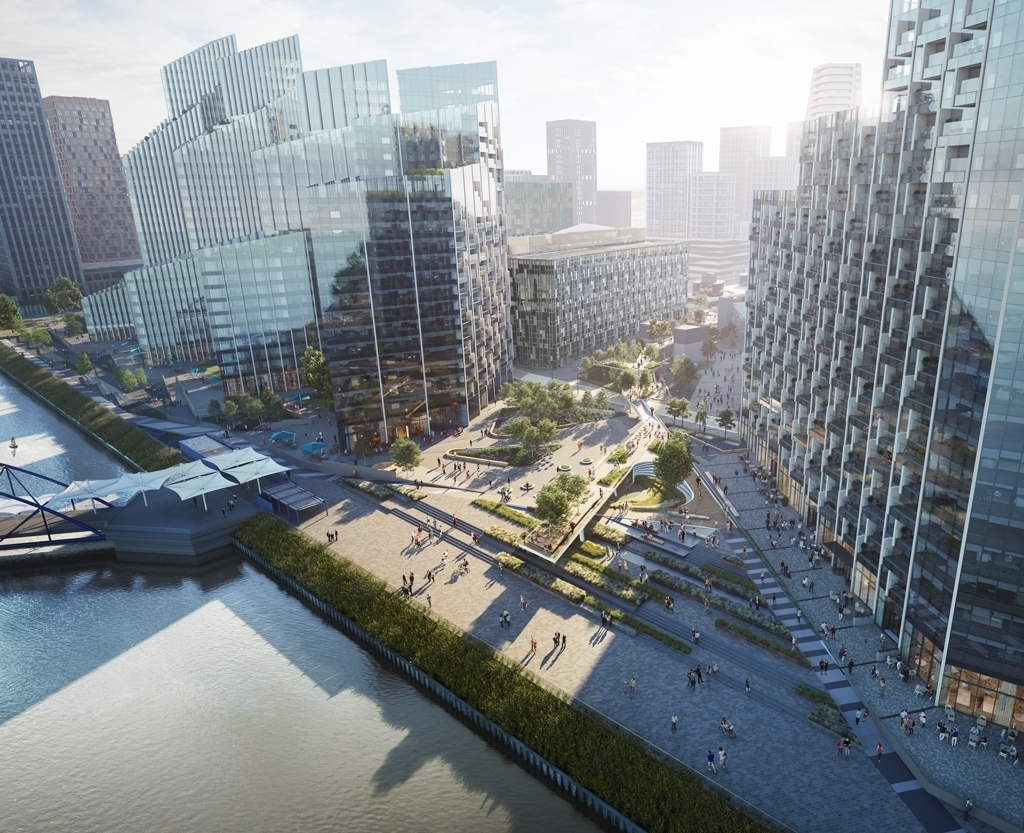
A CGI of the East riverfront on Greenwich Peninsula ©Uniform
Plans in the pipeline are similarly community-focussed. Studio Morison are creating London’s longest picnic table, which stretches 27 metres along the riverfront, inviting up to 60 diners to share their stories over dinner. London’s only elevated linear park, The Tide, will be hedged with sculptures by Damien Hirst among others, and landscaped by Eelco Hooftman, creating a haven for Londoners craving headspace and riverside relaxation surrounded by silver birch and pine trees. The first of The Tide’s five kilometres has been created by Diller Scofidio + Renfro, co-designers of Manhattan’s High Line, in collaboration with Neiheiser Argyros. When completed, it will be twice the length of the High Line, providing residents and visitors with running routes, meditation zones and creative inspiration.
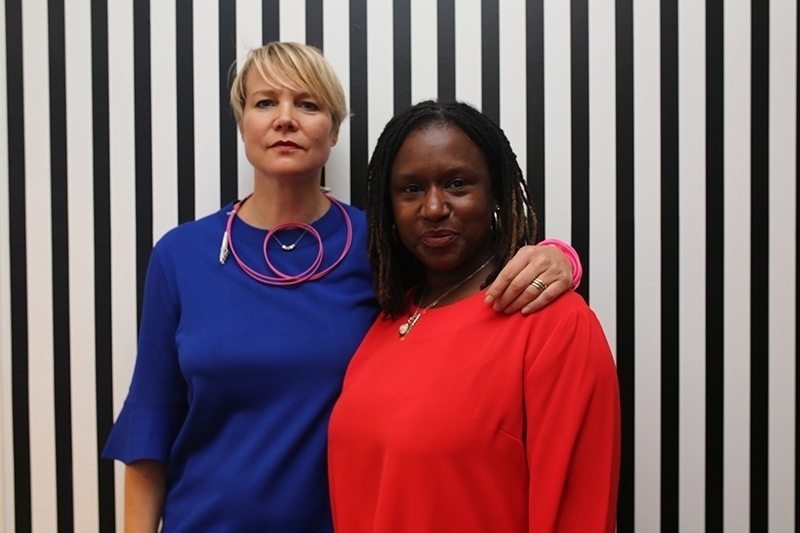
Jemima Burrill, Curator, and Kaia Charles, Cultural Curator at NOW Gallery
Curators at NOW Gallery on Greenwich Peninsula, Jemima Burrill and Kaia Charles, are the driving force behind this pioneering movement to build art into the bones of the emerging ‘New London’. Their vision will culminate in the next phase of Knight Dragon’s transformation of the Peninsula, the Design District. Set to consist of 16 low-rise buildings designed by eight internationally renowned architects, its first tenants and 2020 opening loom. We spoke to Jemima and Kaia about how art has changed – and continues to change – life on the Peninsula.
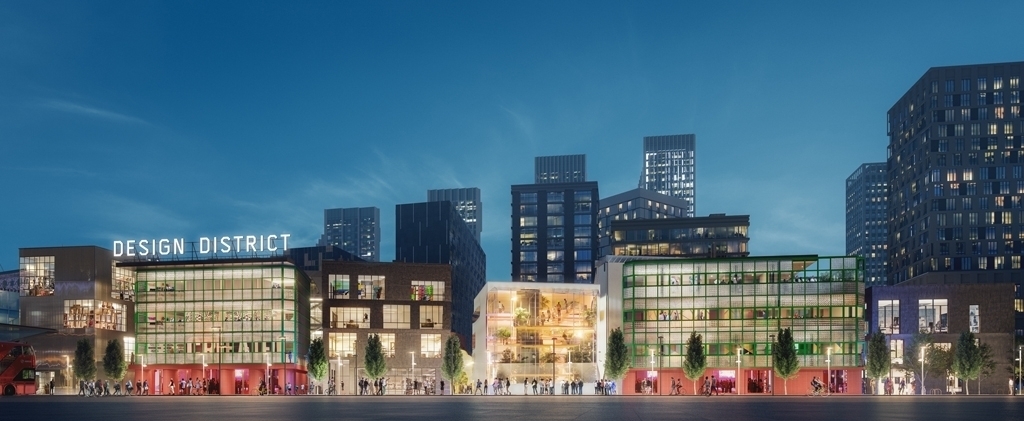
CGI of The Design District ©Knight Dragon & Uniform
Is there a ‘grand plan’ for the kind of message you want people to take from the Peninsula?
JB I wouldn’t use the term ‘grand plan’: we are down to earth people and want everyone to enjoy the place itself, not just its cultural elements. When you come out of North Greenwich tube station, it’s easy to forget you’re surrounded by the Thames. But, as you walk towards the river you can almost smell the sea. It’s like being on holiday, yet you’re only 15 minutes away from Bond Street!
Ultimately though, NOW Gallery, which I curate with Kaia, exhibits shows unlike anywhere else. With an ever-revolving programme of free-to-attend work from established and emerging artists, designers and other creative practitioners, we want to prove that art is for everyone. By the very nature of the public art commissions on the Peninsula, we encourage interaction and engagement. And we’re not doing so passively. We have enlisted the help of artists such as Morag Myerscough, Studio Morison, Alex Chinneck and designers Studio Weave to come up with interventions that have active conversations with people. When we commissioned designers Raw Edges to create bespoke outdoor chairs for the area, we ensured that they are not just for sitting on, but built so that passers-by almost have to clamber on them. The design encourages people to sit next to each other, sometimes quite intimately. This all helps to engender a community, which is integral to the ongoing regeneration of Greenwich Peninsula.
A pinnacle moment of the development of the Peninsula will be the launch of The Tide, which opens this summer and will be home to London’s largest free-to-view collection of permanent public art by the likes of Damien Hirst, Allen Jones, Morag Myerscough and Studio Morison. We’ll celebrate the launch at The Turning Tides Festival, which will take place over two weekends. The key message we want people to take away from it is that we are activating a new area of London with a sense of fun, inclusiveness and cultural participation.
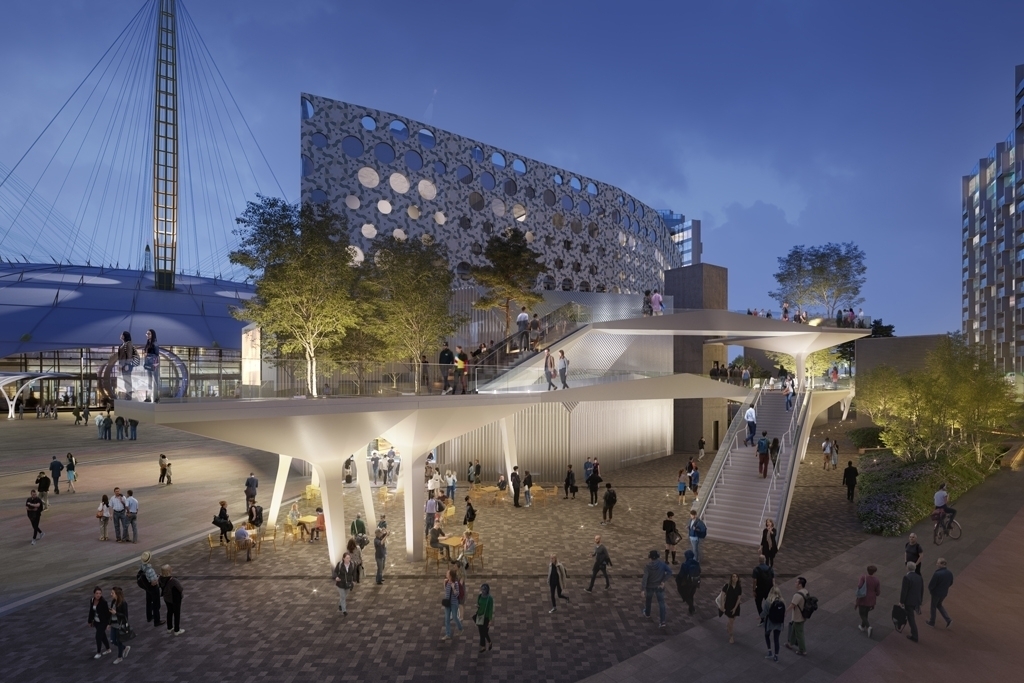
The Tide on Greenwich Peninsula ©Uniform
Where is your favourite place to be on the Peninsula?
KC We recently commissioned architects Studio Weave in collaboration with design studio HATO. They created a playful route to Central Park, which sits at the heart of the Peninsula. Along the way is 33, a folly which looks over the tree canopies in one direction and will eventually overlook the new Design District in the other direction. This is one of my favourite places. The structure celebrates human scale and experiments with historical building techniques, exploring the notion of ‘home’.
JB Walking by the river and looking out to the Thames Barrier with the sailing boats bobbing on their moorings from the Greenwich Yacht Club, knowing there are all sorts of interesting birds nesting in the reeds along the river bank – that is pretty special. Studio Morison’s designing a sixty-seater curved picnic bench – Seafood Disco – that will truly help make the most of this view. There will also be four BBQs contributing to this new public area, creating a green space for people to gather, cook and eat together on a beautiful terrazzo surface table dotted with mussel shells – hence the name. We want to say, ‘I went to a seafood disco and pulled a muscle’. We want London to know that at the Peninsula, people don’t take themselves seriously.
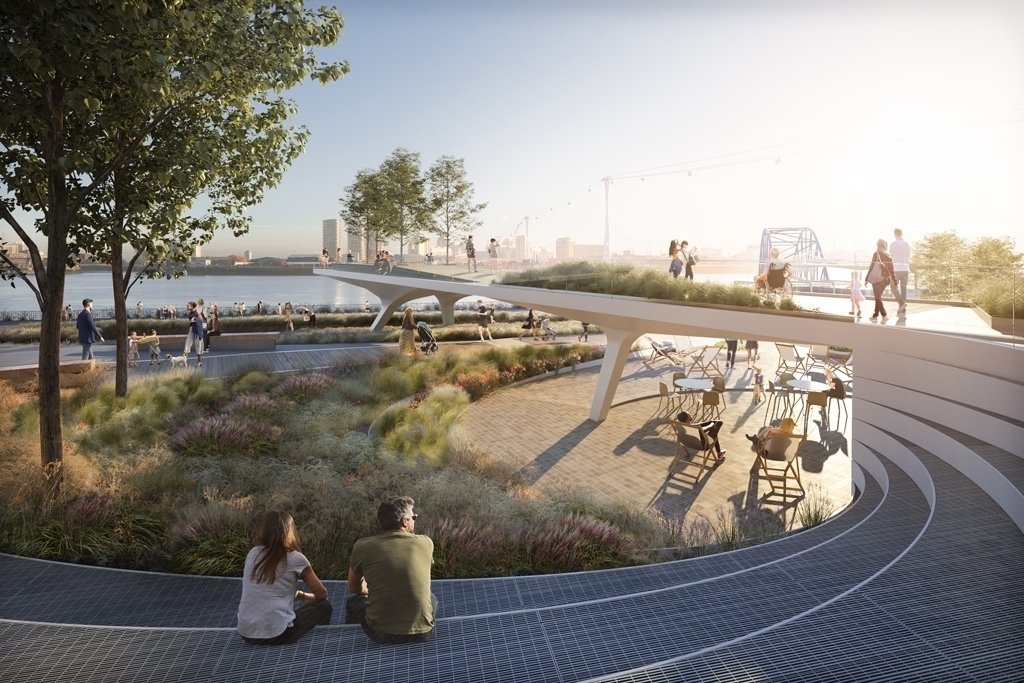
Sunrise at The Tide on Greenwich Peninsula ©Uniform
Kaia, you’ve lived in the area for years. Do you think the existing community are responding well to the change?
KC The truth is, there has been a lot going on. For visitors and residents of London, it’s worth spending some time rediscovering the area. Many people are surprised how much the Peninsula has transformed since 1999. We have an amazing collection of art from the turn of the Millennium – Gormley’s Quantum Cloud, Barr Gazetas’ Spire and Richard Wilson’s Slice of Reality. In the last five years we’ve introduced new works fusing art and architecture and playing with scale. They form a trail through the Peninsula – from its green spaces to the riverside. Conrad Shawcross’ Optic Cloak and Alex Chinneck’s Bullet from a Shooting Star are just two of the new iconic public art landmarks.
In terms of the community, we have an interesting mix of the established and new. There is also a substantial student population from Ravensbourne. Often significant change can feel like an interruption. But having lived in Greenwich for 18 years, it feels to me that the community has evolved smoothly and taken everything in its stride. With more and more people living and working here, our free events, including the Urban Village fete, Summer Jazz weekenders and the new Turning Tides festival in July, are more valuable than ever. I’m a huge fan of the late architectural writer Jane Jacobs who believed that humanity and enterprise should co-exist and that cities work best with multiple layers of diversity.
The first kilometre of The Tide on Greenwich Peninsula opens on 5 July. The Turning Tides Festival will take place on 5–7 and 12–14 July.
